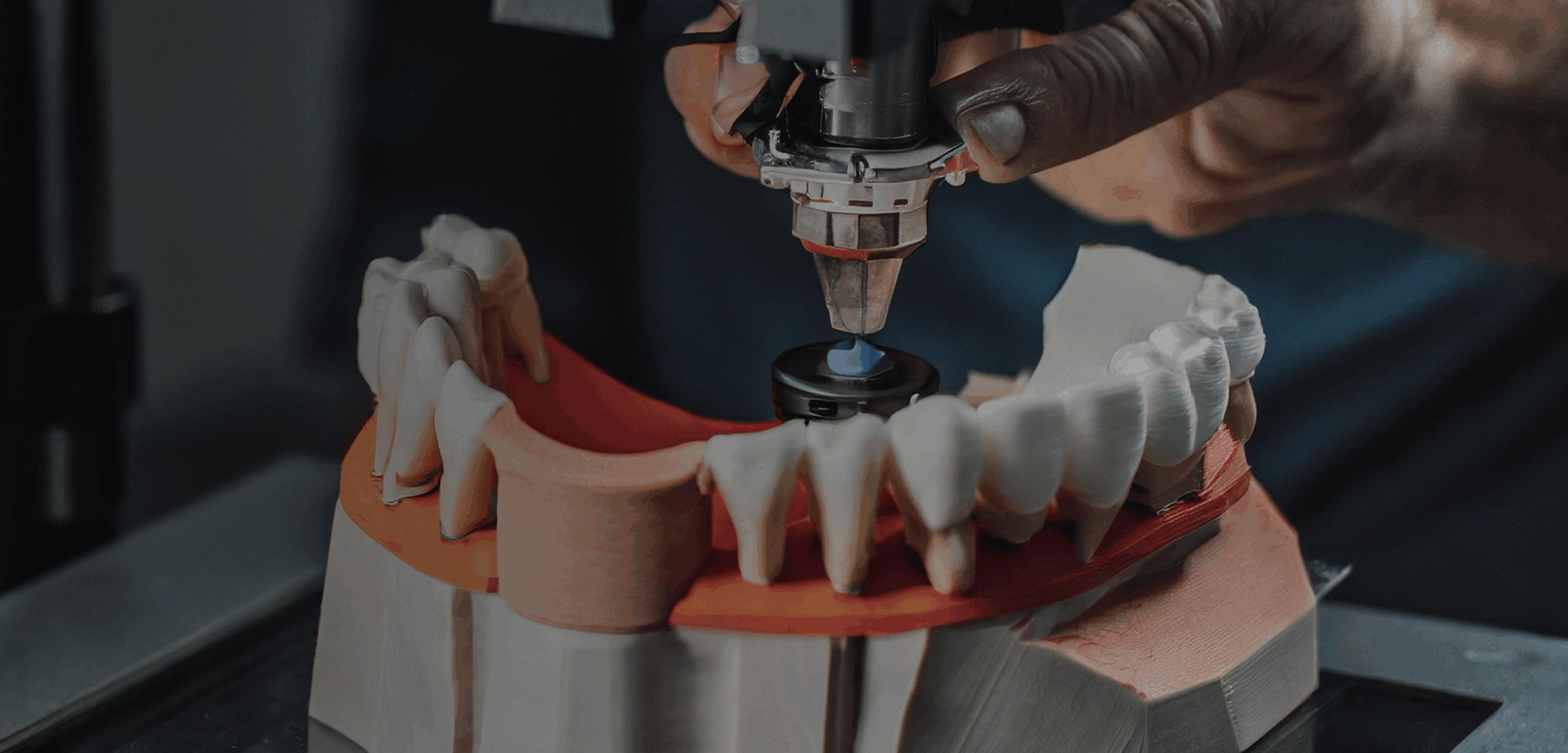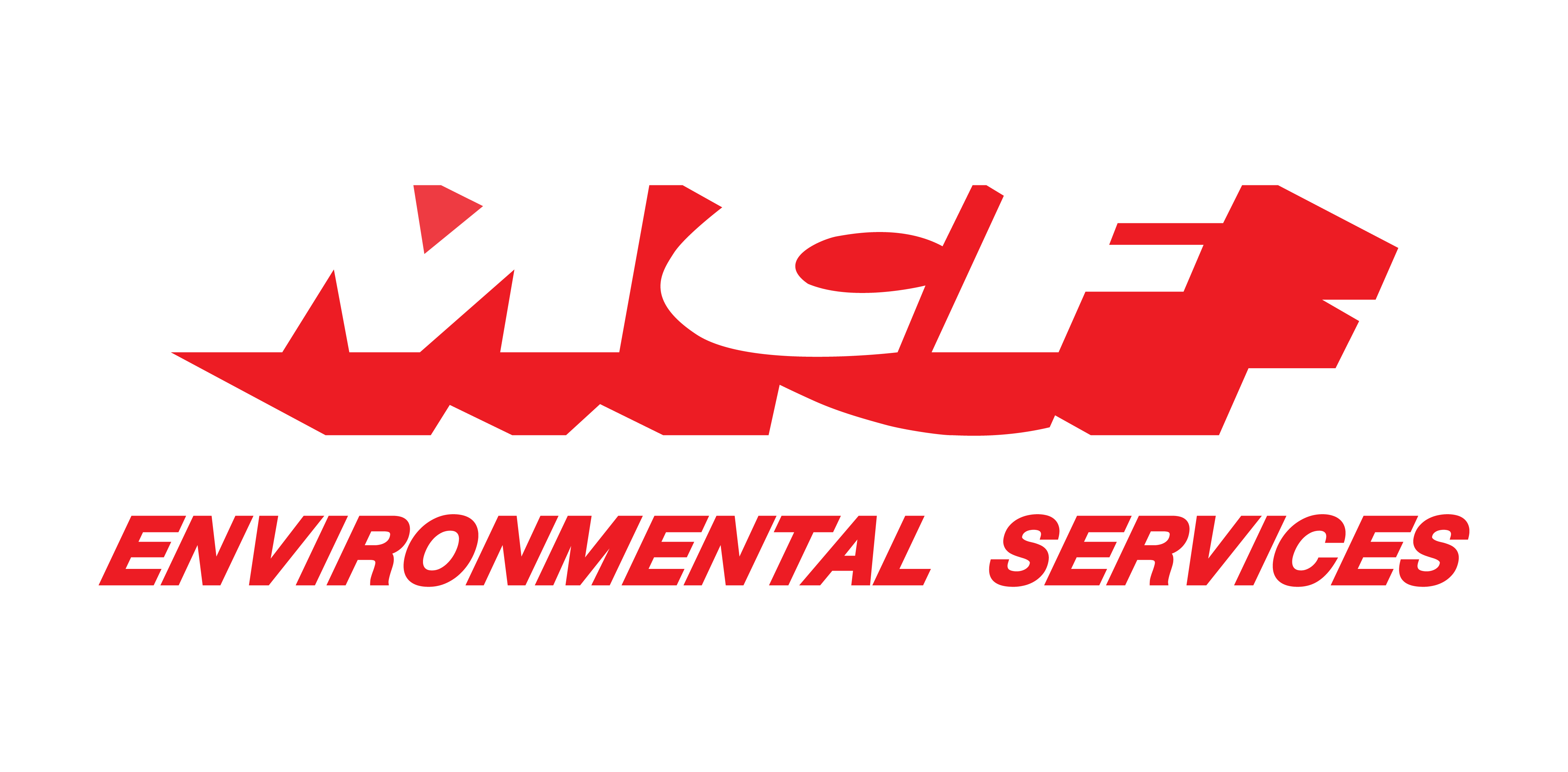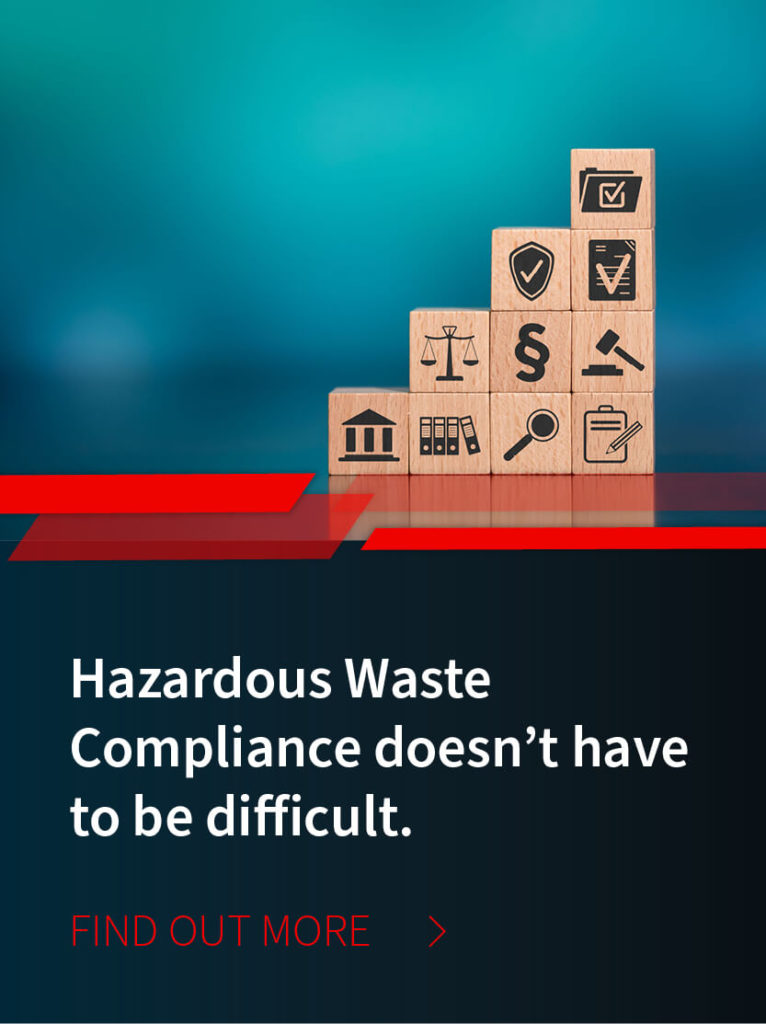
/ IN THIS BLOG
3D printing is changing the face of healthcare. Innovations in on-demand customization are appearing in everything from dental models and surgical tools to prosthetics and implants are becoming commonplace across the medical fields. Surgery centers, dental practices, hospitals, and pharmacies are finding new ways to use this technology every year. The appeal is obvious. 3D printing offers fast production and custom designs, along with cost reductions compared to the traditional manufacturing route.
But these innovations also come with some complications. 3D printing generates waste streams that don’t fit neatly into traditional disposal categories. Resins, powders, solvents, and contaminated filters are all waste items that traditionally would be dealt with by a manufacturing factory. But suddenly now, thanks to the convenience of on-site 3D printing, healthcare environments are having to manage their storage and disposal. And because these materials all pose risks if not managed properly, it’s important to understand proper protocol before venturing into this new territory. Unlike red bag waste or pharmaceutical waste, these materials often fall under hazardous waste rules, with stricter requirements for storage, transport, and disposal.
For facility and pharmacy managers, keeping up with compliance in this new arena will become an essential skill. Safe disposal protects staff, patients, and the environment while preventing costly fines or disruptions. Which is why it’s essential to dig into this “dirty side” of 3D printing so you can be sure all regulations are being met and practical steps for responsible disposal are consistently taken.
01 / Understanding 3D Printing Waste in Healthcare
3D printing is expanding exponentially throughout healthcare specialties. Where just a few years ago only a handful of offices were employing the technology, today it’s in the thousands and quickly becoming mainstream. Dental practices print custom crowns, orthodontic aligners, and surgical models. Hospitals and research labs use printers for practice and training as well as prosthetics, implants, and even experimental tissue scaffolding. Pharmacies have begun exploring 3D-printed medications for tailored dosing.
These applications are being adopted so quickly because they promise immense opportunities to expedite and improve patient care. But, they also generate waste that is very different from typical clinical streams like sharps or expired medications. The byproducts of 3D printing include uncured photopolymer resins, fine metal powders, solvents, and contaminated filters. Each of these can present chemical, physical, or environmental hazards if mismanaged.
Unlike red bag waste vs pharmaceutical waste, which are well defined by healthcare regulations, 3D printing waste falls under a mix of EPA hazardous waste rules and state-specific requirements. That means medical offices and hospitals need to evaluate these new waste streams carefully to avoid misclassification.
By understanding what materials your facility uses and generates along with how regulators view them, your team can work to build safe, compliant disposal plans before problems arise. The following are some of the most common materials that are part of 3D printing waste streams.
02 / Resins
Resins are one of the most widely used materials in medical 3D printing, especially in dental practices and surgical planning labs. These liquid photopolymers harden when exposed to light, making them ideal for creating detailed models, prosthetics, and even surgical guides.
The problem arises when resin is left uncured. In liquid form, it can irritate skin, damage respiratory tissue, and contaminate surfaces. Even trace amounts in rinse water or on cleaning wipes can be considered hazardous. Once cured, resins are generally safer to handle, but the uncured residue must be treated as hazardous waste.
Best practices for disposal:
Never dispose of liquid resin down drains or in red bag waste.
Work with a licensed hazardous waste provider to ensure compliant removal.
Keep Safety Data Sheets (SDS) on file for each resin in use.
For medical offices, safe handling of resin waste is not only a regulatory requirement but also critical for protecting staff who may not be accustomed to handling chemical hazards alongside their clinical duties.
03 / Thermoplastics (PLA, ABS, PETG, Nylon)
Thermoplastics are another major material in healthcare 3D printing. Common varieties include PLA, ABS, PETG, and Nylon. These plastics are valued for their strength, durability, and versatility, making them popular for device prototypes, orthopedic models, and training tools.
The disposal challenge comes down to whether the plastics are contaminated. Clean thermoplastic scraps may qualify for recycling, especially PLA, which is marketed as biodegradable under certain conditions. However, when plastics are used to produce medical models or come into contact with pharmaceuticals, they may be considered regulated waste. In those cases, they cannot simply go into standard recycling or trash streams.
Best practices for disposal:
Segregate clean plastic scraps for recycling when possible.
Treat contaminated plastics as regulated waste, not as general trash.
Never place thermoplastic waste into red bag waste, which is reserved for biohazards.
Work with a disposal partner to determine if specific streams qualify for recycling or must be managed under medical office medication disposal rules.
Getting this right prevents surprise costs and ensures the TSDF can plan for your waste effectively. For plant managers, accurate volume reporting is one of the simplest ways to avoid pickup disruptions.
04 / Powders (Metal & Polymer)
Powder-based 3D printing is increasingly used in healthcare for creating implants, surgical instruments, and high-strength prototypes. Materials often include metals like titanium, stainless steel, or cobalt-chrome, as well as polymer powders.
These fine powders pose unique risks. Inhaling such materials can cause respiratory issues, while prolonged exposure may lead to heavy metal toxicity. Metal powders also present a combustible dust hazard if not stored properly. Even small spills can contaminate surfaces or air systems, creating both safety and compliance concerns.
Best practices for disposal:
Collect powders in sealed, anti-static containers to prevent release into the environment.
Avoid sweeping spills; use HEPA-filter vacuums to reduce airborne exposure.
Treat powders as hazardous waste unless confirmed otherwise through testing.
Train staff in proper handling and spill response to prevent accidents.
Because powders can behave differently than solids or liquids, it’s best to always assume higher risk and plan for stricter disposal pathways.
05 / Cleaning Agents & Solvents
3D printing in medical environments often requires post-processing with cleaning agents. Isopropyl alcohol (IPA) is commonly used to rinse resin prints, while acetone and other solvents may be necessary for smoothing or finishing surfaces. These chemicals are highly flammable and can be harmful if inhaled or absorbed through the skin.
Improper disposal, such as pouring solvents down drains or tossing solvent-soaked wipes in red bag waste, creates both safety and compliance risks. Unlike pharmaceutical waste, these materials fall under hazardous waste regulations and require careful segregation.
Best practices for disposal:
Collect used solvents in approved, fire-safe containers with tight-fitting lids.
Clearly label containers with chemical names and hazards.
Store in ventilated areas away from ignition sources.
Arrange hazardous waste pickups for solvents and solvent-contaminated wipes.
Since these agents are used regularly in 3D printing workflows, healthcare facilities should include them in their hazardous waste profiles. It’s also important to train staff in the proper handling of such chemicals.
06 / Air and Liquid Filters
Filters are a critical part of 3D printing operations. Air filters capture resin fumes, polymer dust, and fine metal particles, while liquid filters remove resin residue and other contaminants from cleaning baths. Once used, these filters are no longer ordinary maintenance waste, they’re contaminated with hazardous materials.
Treating used filters like general trash or tossing them into red bag waste creates compliance risks and can expose staff to harmful substances. Depending on the material captured, they may fall under hazardous waste regulations and must be handled accordingly.
Best practices for disposal:
Collect used filters in sealed, labeled containers to prevent accidental exposure.
Keep air and liquid filters separate from pharmaceutical or medical waste.
Work with a hazardous waste partner to classify filters properly and determine whether they require incineration, stabilization, or other specialized treatment.
Replace filters on a routine schedule to minimize risk of breakthrough or overexposure.
A little preparation on the front end can save days on the back end. For busy facilities, these habits translate directly into fewer compliance risks and less downtime waiting on approvals.
07 / Regulatory Considerations for 3D Printing Waste
One of the challenges with 3D printing in healthcare is that its waste streams don’t fall neatly into familiar categories like red bag waste vs pharmaceutical waste. Instead, resins, powders, and solvents are often regulated under hazardous waste laws such as the Resource Conservation and Recovery Act (RCRA).
Under RCRA, generators are responsible for correctly identifying and managing hazardous waste from the point of generation through final disposal. For medical offices and hospitals, this means that 3D printing waste must be included in waste profiles, properly labeled, and shipped with manifests through licensed transporters to approved treatment, storage, and disposal facilities (TSDFs).
Additional considerations include:
State regulations: Some states have stricter rules than federal standards, particularly around solvents and chemical storage.
Worker safety standards: OSHA requires hazard communication (HazCom) training, Safety Data Sheets (SDS), and proper PPE for handling 3D printing materials.
EPA emphasis on accuracy: Submitting incomplete or incorrect information about 3D printing waste streams can lead to fines or rejected shipments.
For facility managers, the key is to recognize that 3D printing waste is not exempt just because it’s new. These streams fall squarely under existing hazardous waste regulations and must be managed with the same rigor as expired medications disposal or other regulated waste that are commonplace in medical settings.
08 / Recycling vs Disposal Pathways
Not all 3D printing waste needs to go straight to incineration or landfill. In fact, some materials can be recycled if handled correctly, reducing both environmental impact and disposal costs.
Plastics and thermoplastics: Certain types of support structures and excess prints can be reprocessed into pellets or filaments for reuse. However, contamination from medical environments may limit recycling options, requiring segregation from hazardous waste.
Metals: Powders like titanium and cobalt-chrome can often be reclaimed by specialty recyclers. Because of their high value, metal recovery is increasingly common, but facilities must ensure recyclers are licensed and compliant.
Resins and solvents: Uncured resins and isopropyl alcohol cleaning solutions are generally treated as hazardous waste. While some closed-loop systems allow for solvent recovery, most of these materials must be managed through TSDF-approved disposal.
Filters and consumables: HEPA filters, wipes, and gloves exposed to printing chemicals typically require hazardous waste disposal and cannot be recycled.
The line between recycling and disposal depends on contamination, regulation, and available vendors. For medical facilities, the safest practice is to treat 3D printing waste like other regulated streams. Separate what can be recovered while ensuring hazardous materials follow approved disposal pathways.
09 / Best Practices for Medical Facilities
Medical offices, hospitals, and pharmacy departments integrating 3D printing into their facilities should build structured waste protocols into their processes from the start. Some proven best practices include:
Segregate by waste type: Keep uncured resins, thermoplastics, metal powders, and contaminated filters separate from general trash and from each other. Proper segregation reduces compliance risks and avoids inflating costs by mixing non-hazardous waste with hazardous streams.
Use proper containers: Label and store resins, solvents, and powders in sealed, DOT-approved containers. For sharps or resin-coated supports, use red bag waste or sharps containers only when appropriate. Pharmaceutical waste streams should remain separate.
Train staff thoroughly: Ensure technicians, pharmacists, and custodial teams understand the hazards of 3D printing materials and follow OSHA and EPA guidelines. Training should cover PPE use, spill response, and segregation rules.
Audit waste regularly: Periodic reviews help confirm profiles remain accurate, volumes are tracked correctly, and no cross-contamination is occurring.
Partner with experienced vendors: Work with a provider that understands both medical waste and 3D printing-specific hazards. This ensures safe, compliant disposal and can also identify recycling opportunities where feasible.
10 / Stay Ahead of Risk with Trusted 3D Printing Waste Solutions
3D printing is transforming many aspects of healthcare, but it also introduces new waste streams that require careful oversight. Staying compliant protects staff safety, ensures patient trust, and keeps facilities operating smoothly.
MCF Environmental Services brings over 30 years of hazardous waste management expertise and is a leader in disposal needs for emerging technologies like 3D printing. Our team understands the difference between red bag waste vs pharmaceutical waste, expired medications disposal, and now, the specialized handling of 3D printing materials. We help medical offices, hospitals, and pharmacy departments manage waste safely, cost-effectively, and in full compliance.
MCF Environmental Services helps facilities adopt new technologies responsibly. Our full-service waste management includes guidance, training, and hands-on support so your practice gets off to the right start. We’re here to help your facility stay compliant and implement practical, cost-effective strategies that are easy for the entire team to adopt.
Contact MCF Environmental Services today to develop a tailored 3D printing waste disposal program that positions your organization for the future of medicine.
Robert Losurdo
President, COO








